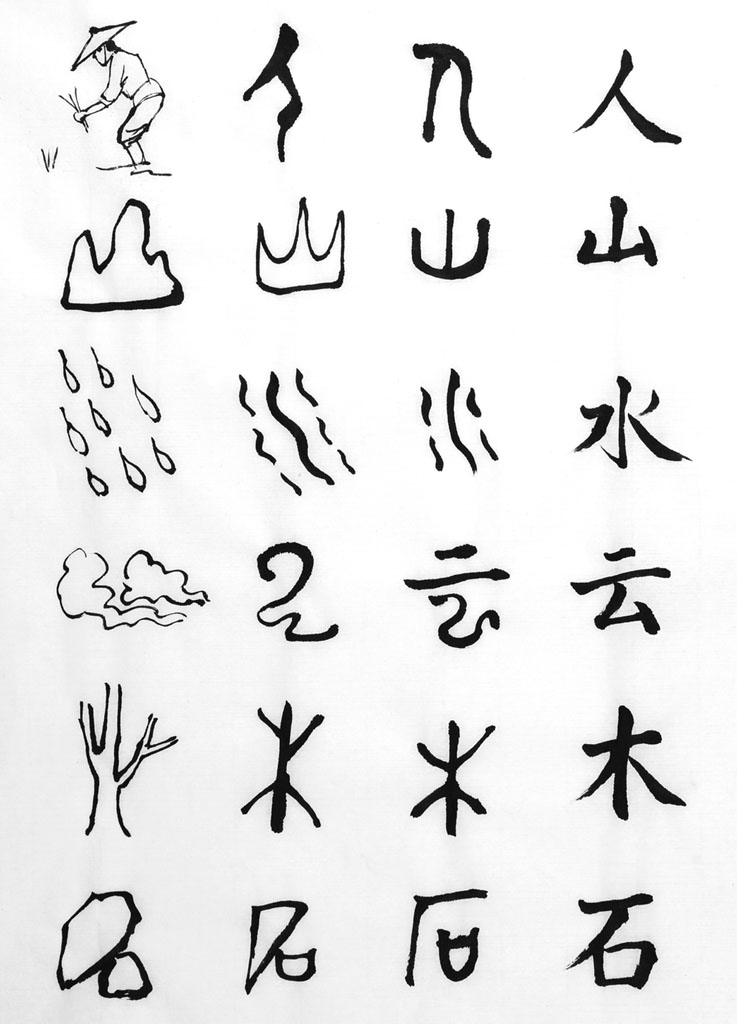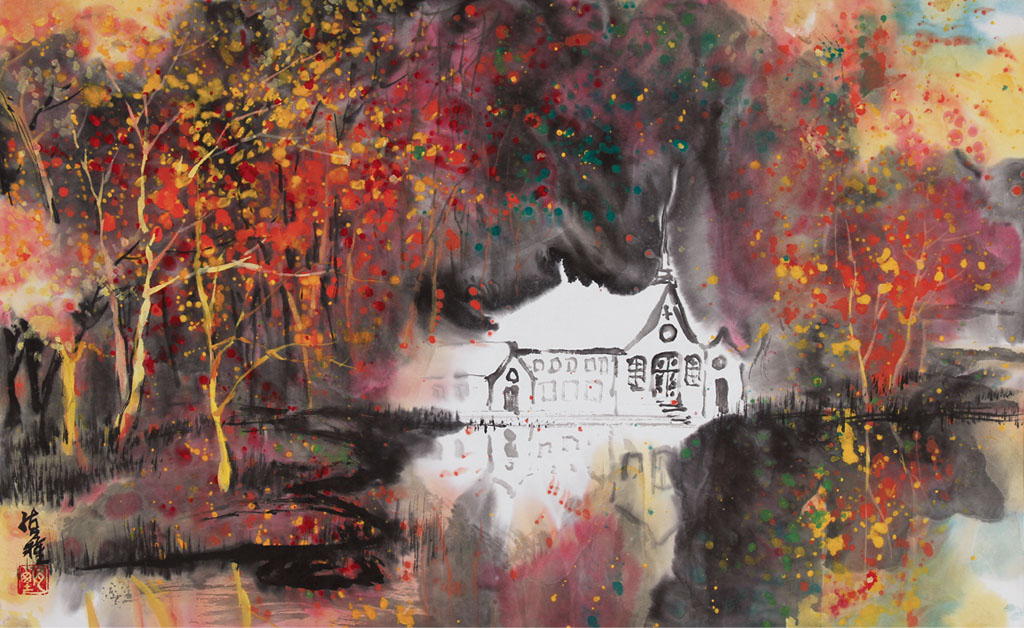
Chinese symbols evolved from artistic depictions of subjects. Here are six easily recognizable common characters, from top to bottom: people, mountains, water, clouds, trees and rocks.
There are many differences between Chinese and Western painting other than mediums and ink.
Chinese artists use their imaginations to paint expressive interpretations of nature, staying true to the Taoist philosophy of achieving harmony with nature. Western artists rely on shapes, colors, lights and shadows to convey a scene. Chinese painting uses the power of suggestion to capture the essence of objects, while traditional Western painting relies on the meticulous depiction of the object’s forms.
Chinese artists imagine themselves flying over mountains like birds to observe landscapes creating a moving perspective. The goal is to invite the viewer to wander over and through the landscape. In contrast, Western landscape paintings usually have one-, two- or three-point perspectives that attempt to accurately depict a scene as it might be captured in a photograph.
Chinese artists use simplified, minimal brushstrokes to delineate subjects as they see and feel them. Western artists render objects according to light source to depict an object’s surface, using more technical brushstrokes.
Chinese landscape paintings usually have a lot of unpainted areas while Western landscapes sometimes do not leave whites.
To Chinese painters, unpainted areas are as significant as painted ones. White space is valued to allow the painting to breathe and to enable the audience to use their imaginations to interpret the scene.
Chinese artists rely on the power of suggestion to depict night and rain scenes. A night or rain scene would be the same as a daytime scene, simply adding a moon or umbrella to distinguish the scene. Western artists attempt to capture the night scene as dark, using glittering lights to suggest stars, moons and night lights, and similarly, using water in action to depict rain.

Chinese symbols evolved from artistic depictions of subjects. Here are six easily recognizable common characters, from top to bottom: people, mountains, water, clouds, trees and rocks.

WHITE CHURCH
Oil on canvas 11” × 18” (28cm × 46cm)
Many modern Chinese-style paintings are a combination of Western and Eastern techniques, fitting nicely in the Taoist and Confucian philosophy of moderation.